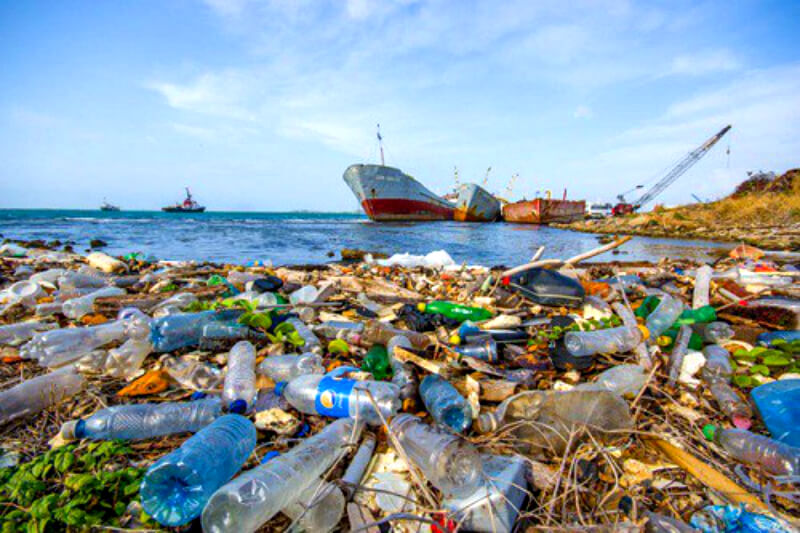Responsible for causing environmental pollution is not the packaging, it’s the way we treat the packaging itself. ”
The birth of plastic and nylon has completely changed the face of the consumer and retail industry. Today, plastic and plastic packaging has been used to package almost all kinds of products that are consumed every day: food, drinking water, cleaning chemicals, medical products …
However, in the face of serious plastic waste pollution, many opinions say that it is necessary to limit the use of plastic packaging, even boycott, and call for the use of alternative materials that can decompose.

Plastic waste cannot “swim” into the sea if it is disposed of at the right place.
Plastic packaging: Good or bad?
Undeniably, the packaging industry has contributed to the increase in solid waste from consumption. However, plastic packaging actually brings many benefits to human activities.
According to the European Environmental and Packaging Organization (EUROPEN) report, besides protecting goods, distinguishing brands, providing information and creating convenience for consumers, packaging also contributes in no small part to the sustainable development goals.
Specifically, plastic packaging helps minimize waste due to rancidity, decomposition of food products, food and beverages. This is a great basis for ensuring food security, solving hunger and poverty (goals 1 and 2 of the 17 Sustainable Development Goals set by the United Nations). Not only that, the decomposition of food can also become a source of serious environmental pollution.

Plastic packaging brings many benefits to our lives
In addition, with compactness, lightness and resistance to water, air, bacteria, and plastic packaging, the transportation of goods is more convenient, contributing to reducing traffic emissions. transportation and energy saving.
Packaging also makes it difficult for chemical products to leak and harm the environment, especially detergents, soaps or pesticides, and pesticides.
In addition to printing labels, product names and necessary information, packaging is now also a place where manufacturers express their messages. Many businesses have printed on the packaging of calls, recycling instructions, helping to change consumer perception and behavior.
The problem of using the packaging
Plastic waste – mostly packaging waste – is having serious environmental consequences. According to a study by the World Economic Forum (WEF), by 2050, the amount of plastic trash in the ocean will exceed the amount of fish. In addition, the burial of waste from packaging also creates opportunities for residual chemicals to seep into the ground, contaminate the soil and water sources.
In some places, plastic waste and other hard-to-handle solid waste will be burned. Too difficult to handle, they burn it out of the eye, but in fact they do not disappear anywhere, but change into toxic gases, endangering human health.

Plastic rubbish cannot flow into rivers, lakes, or the sea without indiscriminate human discharge
However, plastic containers are not harmful if handled properly. Plastic rubbish cannot flow into rivers, lakes, or the sea without indiscriminate human discharge. Residual residues in plastic shells also cannot contaminate the soil if packaging is pre-treated before discharge.
According to materials experts, in addition to the above benefits, plastic packaging also possesses huge recycling potential. However, according to WEF, the proportion of plastic packaging recycled worldwide is only about 14% – a small number compared to the potential of plastic materials.
In Vietnam, most plastic and plastic packaging are not disposed of or properly collected. Bottles, boxes, candies … can be seen everywhere, from the middle of the inner city streets to in the fields, from the mountains to the sea, in a well polite container. Mixed waste, both organic and inorganic, is both recyclable and non-recyclable. Thus, not only harming the environment, but we are also wasting waste resources, while natural resources are gradually being exhausted.
Can the green country of Vietnam be clean and beautiful forever? It depends on what we do! Every citizen should change their behavior and habits of using plastic bags, know how to use them properly today and right now for a green Vietnam, for a green earth.
